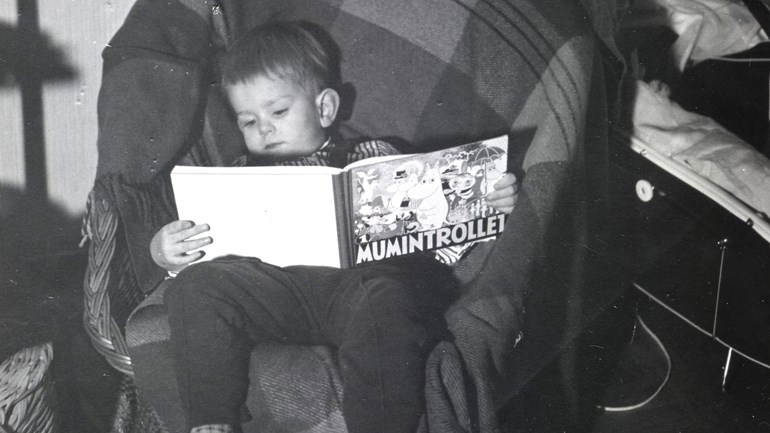The magnificence of Moomin is in the miniscule

Björn Sundmark, professor of English literature, a keen reader of the Moomins as a child.
Moomin author Tove Jansson was an expert in exploring the enormous in the minute; Malmö University professor Björn Sundmark has pointed the magnifying glass on the fairytale land and discovered the concept of muminalism.
Building worlds is a common technique in literature, not least in fantasy and children's books. Tove Jansson's way of letting her characters and worlds grow out of something small is not unique, but in a newly-published article, Sundmark, a professor of English literature, demonstrates that it is particularly typical of her work.
Jansson used many forms of expression, but I think the miniature reappears in all of them.
Björn Sundmark
“You can see it as a perspective on literature and art in general, to be able to see the mysterious in the small. It is a way to re-enchant the world, to charge the small and insignificant with value,” says Sundmark.
He calls the children’s author style ‘muminalism’ – a play on ‘minimalism’ – and points out that her approach to the small permeates her entire artistry. For example, magnifying glasses reappears in her books, both in text and illustrations. Through the magnifying glass what the eye, or the imagination, cannot see can be revealed. A little mould suddenly becomes a forest, for example. Sundmark believes that the Jansson’s work is a particularly good example of when art reveals and reflects the world.
“You learn more about how she works but perhaps also what you yourself were looking for in literature and art. It gives a richer picture of how literature and art work in general,” he says.
But Jansson extends this idea beyond the physical; in Moominpappa at Sea, Moominpappa is bored and wants to live a more adventurous life. He takes a job as a lighthouse keeper on a small island and moves there with his family – a clear example of a midlife crisis.
“The fact that they make miniatures, for example Moominmamma building a small bark boat, is recurring. Tove Jansson both expands small things into something very big, but it can also be the other way around, something big that is described as very small – there is something comforting about it.
The scale is not only used to create contrast, being small can have its advantages and be de-dramatizing in certain contexts. In others, however, it is downright dangerous. In the book The Invisible Child, a creature is described as so small and inconspicuous that it does not have a name.
“Jansson used many forms of expression, but I think the miniature reappears in all of them. It is fascinating to see it, it also characterises her adult literature. For me it is a key into her artistry.
“The popularity of many authors is falling, but interest in the Moomins is only increasing. Merchandise is a big part of it and the stuff fits well with muminalism, the designs lend themselves well to making miniatures,” adds Sundmark.
Text: Marc Malmqvist & Adrian Grist
